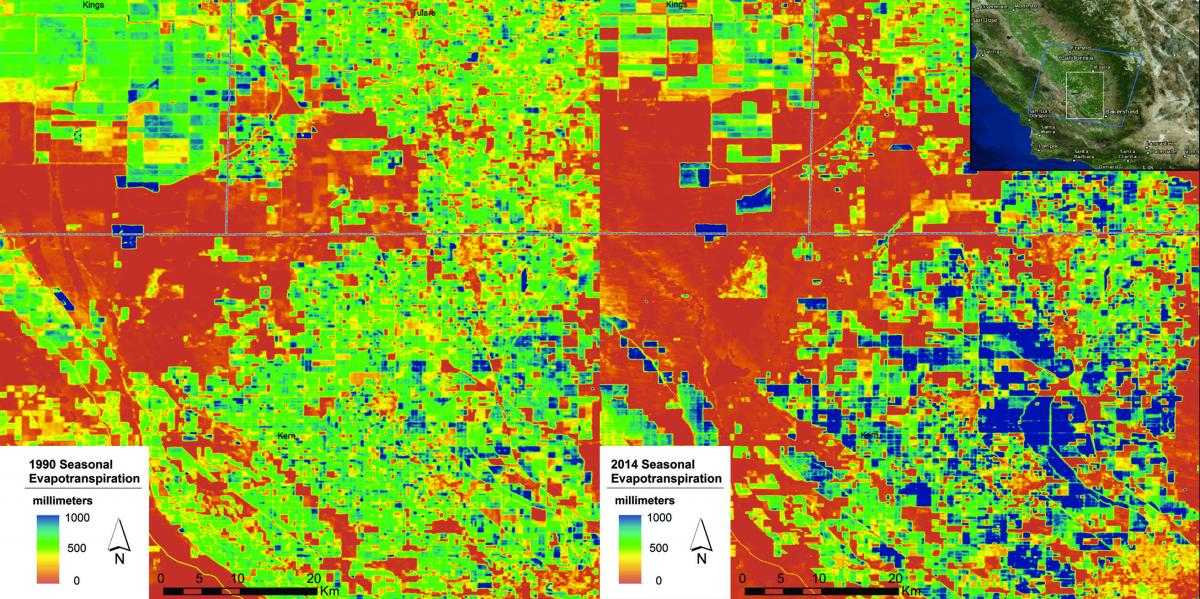Water, one of the Nation’s most important natural resources, has long been considered inexhaustible. Yet changes in land use, climate, and population demographics are placing unprecedented demands on America’s water supplies. As droughts rage and aquifers dwindle, people may wonder: Is there enough water to meet all of our needs? Landsat satellites are helping to answer that question.
Using Landsat satellite data, scientists with the USGS have helped to refine a technique called evapotranspiration (ET) water-use mapping to measure how much water crops are using across landscapes and through time. These ET water-use maps are created using a computer model that integrates Landsat and weather data. Crucial to the process is Landsat’s thermal (infrared) band. Thanks to that thermal band with its 100-m resolution, water-use maps can be created at a scale detailed enough to show how much water crops are using at the level of individual fields anywhere in the country.
ET water-use maps can show how much water crops are using in a single day or during an entire growing season. Drawing on the vast Landsat satellite image archive, it is also possible to create maps that span decades to reveal long-term trends in water use. USGS scientists can map water use at different scales to address different water resource questions and concerns. Field-scale maps, for example, are powerful tools for estimating and managing water consumption on irrigated croplands. Basin-scale water-use maps assist in understanding water balance and availability in river basins and watersheds. These large-area maps are useful for:
• Estimating water use by different sectors within a watershed.
• Resolving disputes regarding water rights and allocations.
• Evaluating aquifer depletions and quantifying net groundwater pumping.

This pair of ET water-use maps shows crop water use in California’s San Joaquin Valley in 1990 (left) and 2014 (right). Comparing the maps reveals changes in irrigation patterns during this period. Notice, for example, that water use intensified in many places (increase in blue areas) and some irrigated lands (green in 1990) transitioned out of agricultural production (reddish brown) by 2014.

